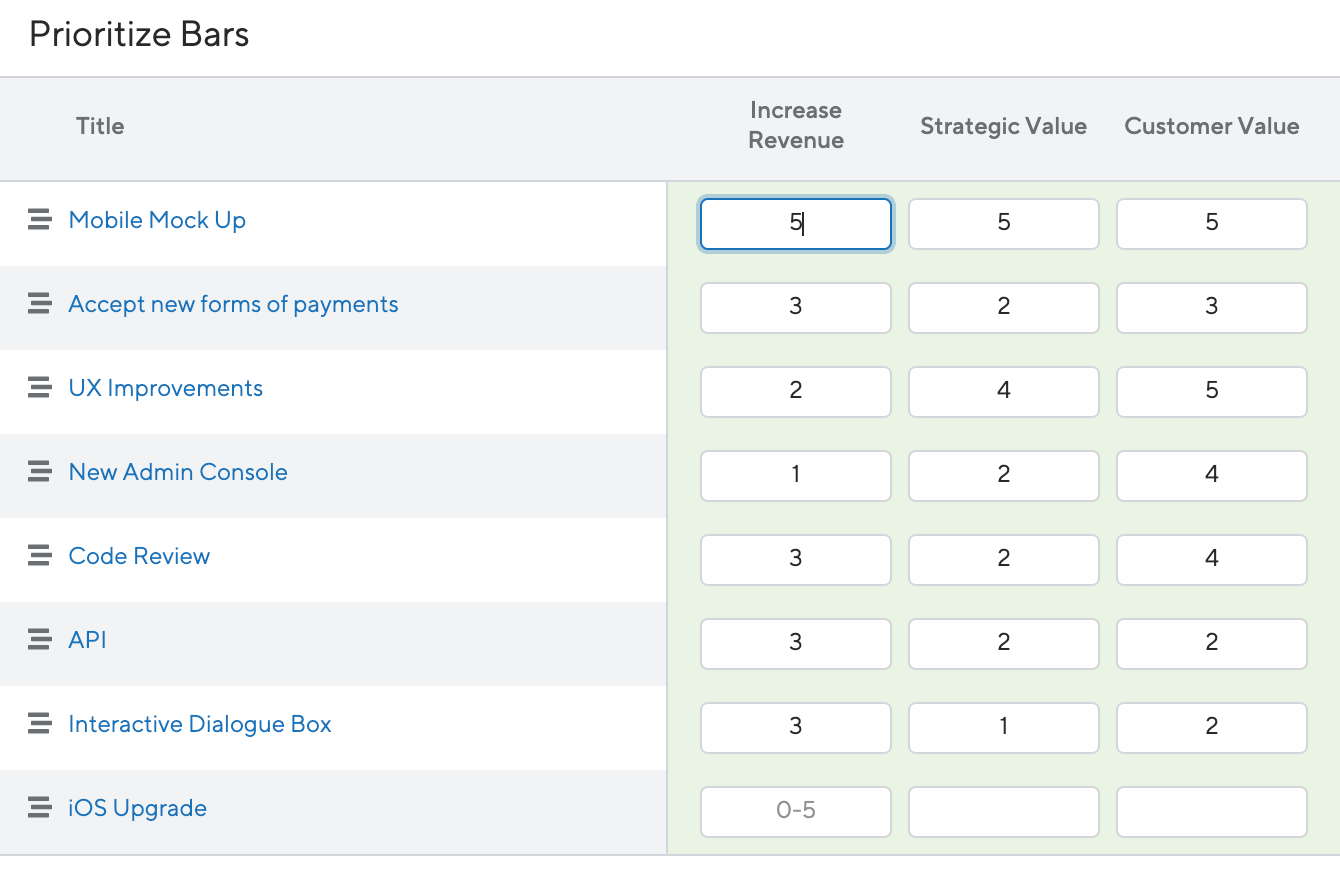Product roadmap planning can involve many people from various teams across a company. First, we’ll review who the typical participants are. Then we will dive into what roles each person plays. We will finish with how product managers can make their roadmap planning sessions as productive as possible.
Before we jump into those topics, let’s define a product roadmap what we mean by product roadmap planning. There are two distinct categories of this type of planning. As a product professional, you will likely engage in both of them as you oversee your company’s products.
What is a Product Roadmap?
A product roadmap communicates the why and what behind what you’re building. A roadmap is a guiding strategic document as well as a plan for executing the product strategy.
2 Types of Product Roadmap Planning
1. Developing the initial product roadmap.
The first type of product roadmap planning occurs as the team starts to formulate its strategic thinking about a new product. During this planning, the team will focus on such topics as:
- Determining the primary, big-picture objectives for the new product.
- Prioritizing the early functionality to develop for the product’s initial launch.
- Identifying the success criteria. To indicate whether the product’s initial launch is on track to achieve big-picture goals. (User adoption rates, for example, or conversions from free trial downloads to paid subscriptions.)
2. Reviewing the product roadmap at regular intervals.
The second type of planning will consist of ongoing strategic sessions. These sessions must be at regular intervals to review the product’s progress. You do this to make necessary adjustments to the roadmap based on new realities. During these roadmap planning sessions, the team will focus on such issues as:
- Review new ideas and feedback to determine which items to prioritize next for the product.
- Discuss the timeframes, resources, and levels of effort required to put in place various ideas, requests, and new functionality.
- Add new items to the roadmap going forward, for example, covering the next quarter.
- Re-examine the current plan and priorities against the team’s success criteria, to determine whether or not to adjust the roadmap to reflect new information.
Download The Product Strategy Playbook ➜
The 4 Roles That Should be Involved in Product Roadmap Planning
Now let’s review the typical people and teams who have a hand in product roadmap planning and responsibilities.
1. Product manager
The product manager is ultimately responsible for the product roadmap. So the PM will serve as the driver of the roadmap planning.
Roles and responsibilities:
- Serve as the strategic lead in product roadmap planning.
- Pull together product ideas, relevant data, and other strategic details to guide the planning discussion.
- Set the stage for the planning session.
- Coordinate the roadmap planning meeting itself: inviting the other participants, keeping the meeting on the topic, etc.
- Communicate the agreed-upon strategic vision for the product. Do this to make sure all participants understand the business objectives they apply to the roadmap plan.
- Organize and lead the scoring discussion. In this discussion, the participants weigh the competing feature ideas that the product manager has proposed in the meeting. The team’s goal will be to determine the most strategically advantageous functionality to develop for the product’s initial rollout.
![]() Download the Guide to Roadmap Software ➜
Download the Guide to Roadmap Software ➜
Note: For this part of the roadmap planning, the product manager might use a weighted-scoring application. Create a consistent set of criteria to evaluate all competing feature ideas. One example is the weighted-scoring tool below, in ProductPlan’s roadmap app:
2. Product owner
The product owner participates in the roadmap planning process to serve as the liaison. They are coordinating between the big-picture strategic plan and the development team’s action plan.
Roles and responsibilities:
- Translate the roadmap’s themes, epics, and other strategic items into actionable user stories that the development team can work on.
- Gain an understanding of each theme or epic’s strategic reasoning that the team adds to the roadmap. The product owner will use this understanding to help guide the developers if they have questions.
3. Development representative(s)
The development team’s contribution to product roadmap planning could involve a single person. Such as a development manager or the head of the department. In some cases, the team will choose several people to take part in. For example, if the roadmap planning will require input from different development skillsets.
Roles and responsibilities:
- Guide product resources, timeframes, and effort levels required to develop various features the product team is considering.
- Help the team identify other participants for the discussion. Participants could include the UX team, for example, if a proposed feature will need UX resources to build.
- Provide guidance on the team’s skillsets and whether they will be able to execute on a development plan with their existing resources or will need to hire out.
4. Executive stakeholder
The product team needs to pull in an executive stakeholder for the first type of roadmap planning. That being developing the initial roadmap for a new product. For ongoing roadmap planning, the team will ask the executive to take part. But only when they need decision-maker approval for some new aspect of the roadmap.
Roles and responsibilities:
- Provide executive-level approval to move forward with the product roadmap’s plan.
- Help to secure a budget to enable the product team to execute its plan.
- Offer ongoing reviews and approvals for strategic updates to the roadmap’s plan.
3 Tips for Effective Product Roadmap Planning
Product roadmap planning can be a difficult undertaking. The planning is strategic and high-level. However, the roadmap planning team must, at the same be mindful of the tactical, monetary, and resource implications of its plans.
The team might come up with a great idea for an innovative new app. If developing that app will pull needed resources from other products already earning revenue or hiring costly skillsets the company doesn’t have in-house. The team needs to weigh all these factors before moving forward.
As the strategic driver of product roadmap planning, the product manager will be responsible for bringing all these factors into the discussion. Here are a few suggestions for making those sessions as productive as possible while ensuring the team doesn’t overlook important strategic details as it plans a course for its product.

1. Gather the right team.
The first step to successful product roadmap planning is to assemble the right people for the discussion.
For example, if you don’t have a product owner, you might instead bring in a project manager. A product manager translates the strategic roadmap items into actionable tasks for development.
Assembling the right team from the beginning will also save you time throughout the development process. Even more important, it can help prevent mistakes in your planning. Mistakes that you might have avoided if you had the right input from the right people from the start.
2. Communicate your goals for the planning session.
Now that you’ve pulled together the right people, and you’re ready to begin your product roadmap planning. You will want to kick off your strategic discussions by first making sure everyone on the team understands what a successful outcome will look like. That includes:
- Describe the big-picture vision for the new product.
- Explain the business objectives that you aim to achieve with this new product.
- Communicate any guidelines or limitations that factor into the team’s plans, such as:
- Choose one feature for the product’s first iteration.
- Be ready for launch by a certain date (to coincide with an industry event, for example).
3. Be ready with evidence.
The product roadmap planning team you assemble will be able to make better decisions if you can present them with concrete information.
For example, you should not ask your team what their intuition tells them about which feature will make sense to develop first. Instead, you should provide relevant data to inform their thinking.
This data will be particularly valuable if your initial planning team includes an executive stakeholder. That decision-maker will want to see goal evidence of why you’ve proposed the ideas you have. It’s essential to explain why the team chooses to narrow those ideas to priorities for the roadmap.






